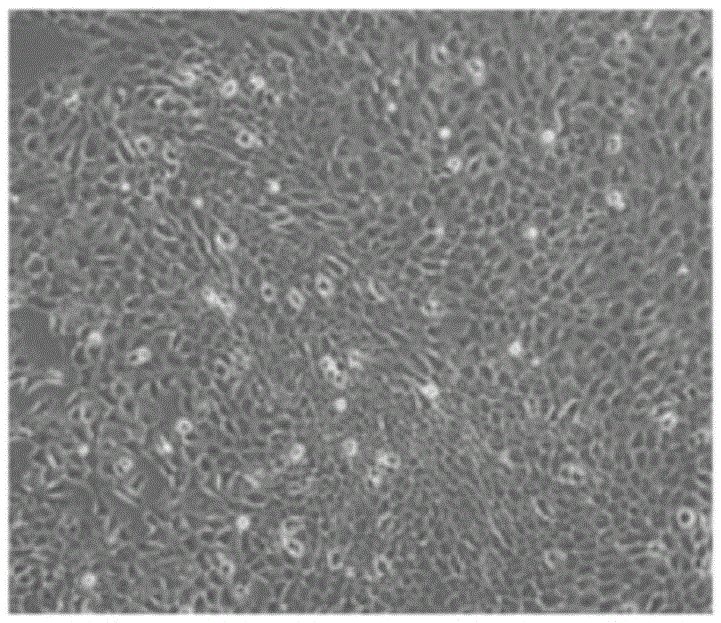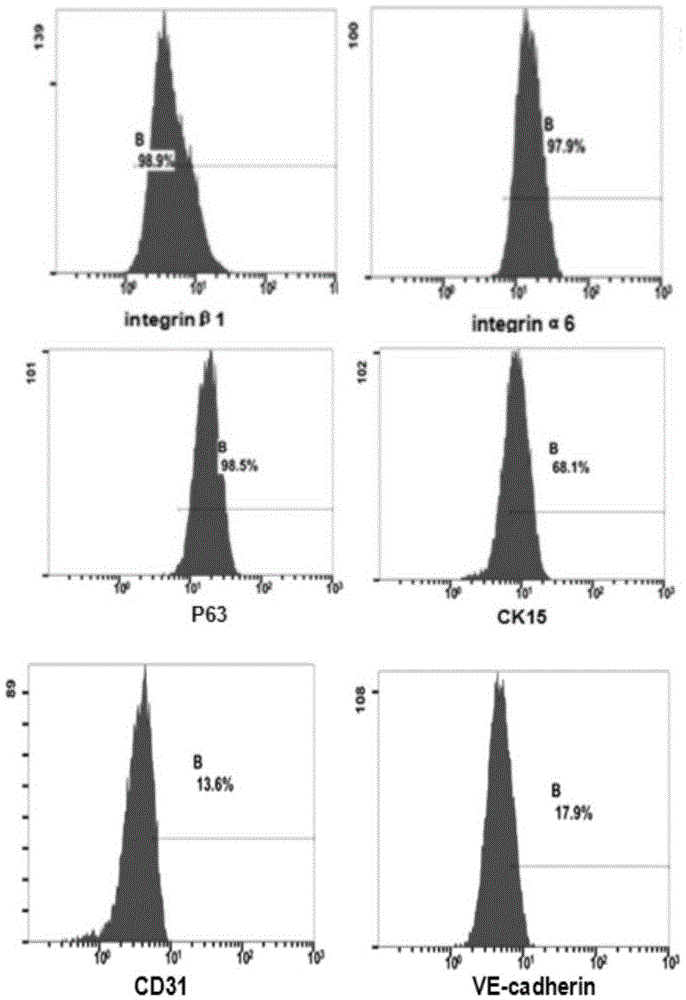Inhibition method for induced differentiation of hair follicle stem cells into vascular endothelial cells
A hair follicle stem cell and vascular endothelial technology, applied in the field of cell culture, can solve the problems of easy aging of vascular endothelial cells, restrictions on direct acquisition and application, and limited sources of materials, so as to reduce the probability of immune rejection and disease transmission, and promote effective healing , source-rich effects
- Summary
- Abstract
- Description
- Claims
- Application Information
AI Technical Summary
Problems solved by technology
Method used
Image
Examples
Embodiment Construction
[0034] The present invention will be described in further detail below in conjunction with the accompanying drawings and specific embodiments.
[0035] 1. Isolation, culture, purification and identification of rat hair follicle stem cells
[0036] 1.1 Isolation of rat hair follicle stem cells
[0037] Newborn 1-week-old SD rats were killed by cervical dislocation, put into a beaker filled with 75% ethanol for disinfection, and then taken out. In an ultra-clean bench, use ophthalmic scissors to shorten the tentacles and cut off the skin of the tentacles, rinse once with 75% ethanol, and then rinse three times with PBS. Then digest with 1% collagenase type IV and 1% Dispase enzyme mixture at 37°C for 90min, and wash twice with PBS. Under a stereomicroscope, use a 1ml syringe needle to desheath the hair follicle, cut off both ends, leaving the bulge, inoculate the bulge of the hair follicle into a pre-coated culture dish, and add 1ml of complete medium.
[0038] The components o...
PUM
 Login to View More
Login to View More Abstract
Description
Claims
Application Information
 Login to View More
Login to View More - R&D
- Intellectual Property
- Life Sciences
- Materials
- Tech Scout
- Unparalleled Data Quality
- Higher Quality Content
- 60% Fewer Hallucinations
Browse by: Latest US Patents, China's latest patents, Technical Efficacy Thesaurus, Application Domain, Technology Topic, Popular Technical Reports.
© 2025 PatSnap. All rights reserved.Legal|Privacy policy|Modern Slavery Act Transparency Statement|Sitemap|About US| Contact US: help@patsnap.com



